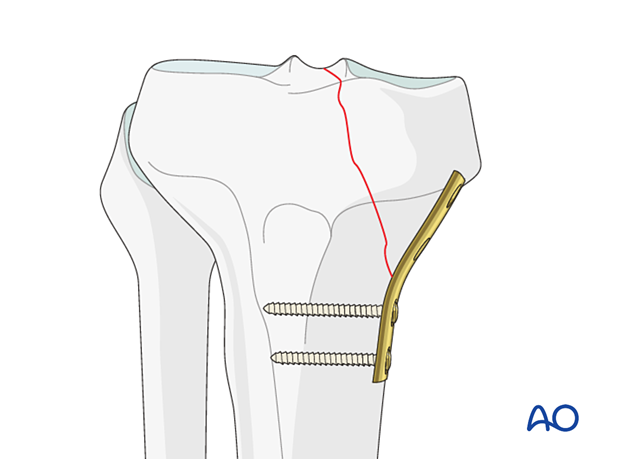Screw insertion in neutral mode
Introduction
When a non-locking screw is inserted into the middle of a plate hole, it presses the plate straight down onto the bone.
The design of the screw head and plate hole allows some angulation of the screw in relation to the plate, eg, to avoid neurovascular structures.
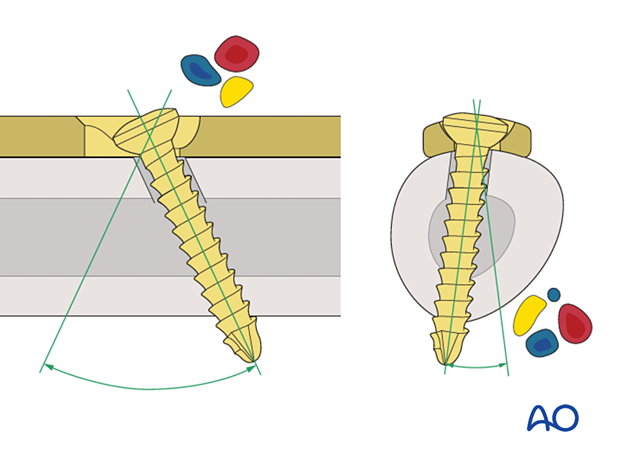
These 3D models show the insertion of a locking head screw (top panel) and a conventional screw in neutral mode (bottom panel).
The conventional screw is inserted in neutral mode and pulls the plate against the bone. Locking head screws engage in the plate using the threads and therefore the plate is not pressed against the bone.
Technique
For one-third tubular plates, the universal spring-loaded dynamic compression plate with limited bone contact (LC-DCP) drill guide is used with the guide pressed against the bone.
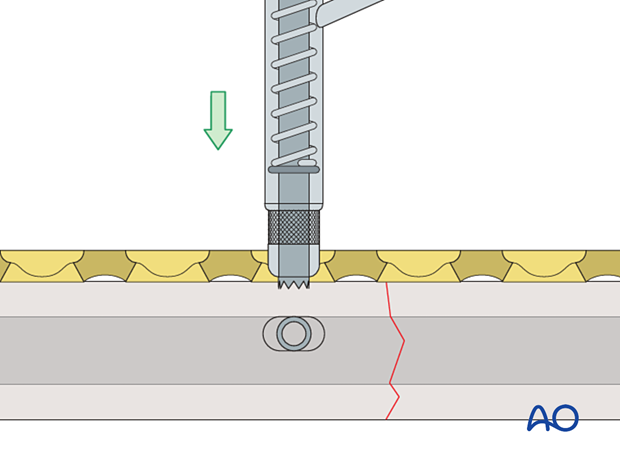
For LC-DCP plates, the DCP drill guide with a green collar is used.
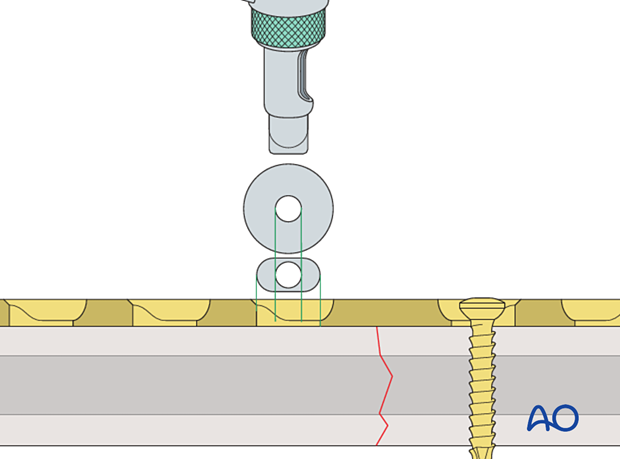
In locking compression plate (LCP) combi holes, the universal spring-loaded DCP drill guide can be used with pressure against the bone in the non-threaded portion of the hole.
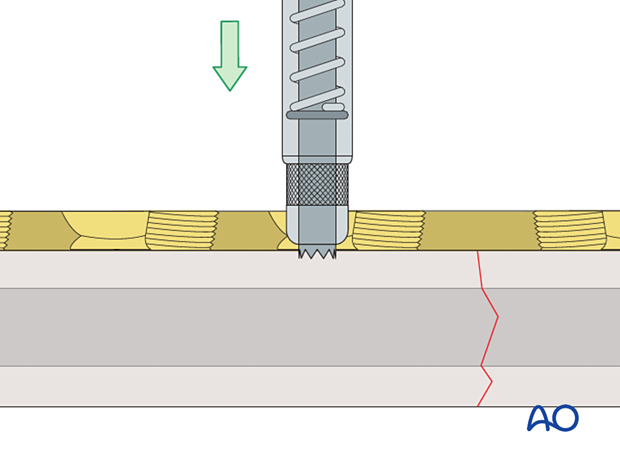
The hole is drilled through both cortices in the diaphysis.
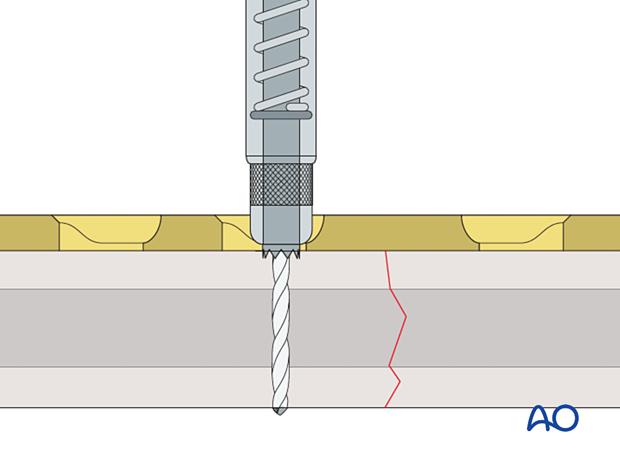
A depth gauge is used to determine the screw length.
If self-tapping screws are used add 2 mm to the screw length to make sure that the portion of the screw in the far cortex is fully threaded.
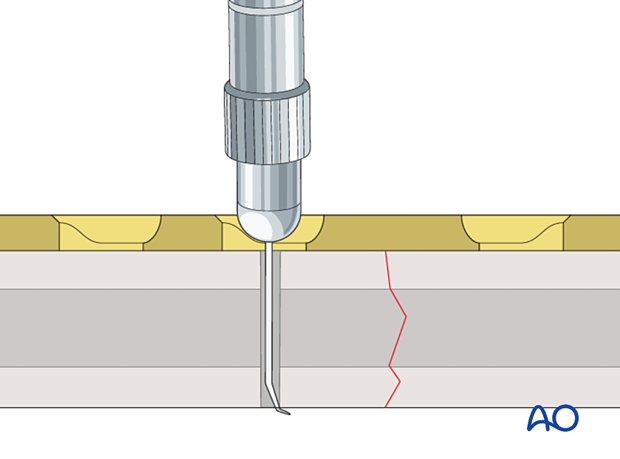
The hole is tapped. The tip of the tap should just penetrate the far cortex. Take care not to allow the tap to continue into the soft tissues.
If self-tapping screws are used, this step should be omitted.
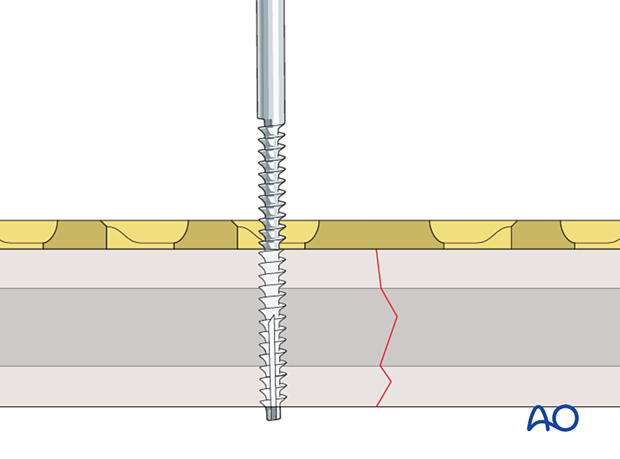
This 3D model shows different types of screw tips.
Self-drilling screws (right) can be inserted in the bone without preparation. Self-tapping screws (middle) need pre-drilling of a pilot hole but can create their own threads by means of cutting flutes at the tip. Standard, round-tipped screws (left) need pre-drilling and tapping.
The screw is inserted and tightened.

These 3D models allow bending of locking head screws and conventional screws to be simulated.
The fixed angle locking construct (bottom panel) provides considerable stability and there is bending of both the screw and the plate. In contrast, the conventional screw (top panel) can freely rotate in its plate hole without causing deformation.
High stress is shown in red and low stress is shown in green.
In the diaphysis, cortical screws are used. These may be self-tapping screws, which have tap flutes at the tip. When the screw is fully tightened, the tap flutes should lie outside the bone to make sure that the portion of the screw in the far cortex is fully threaded.
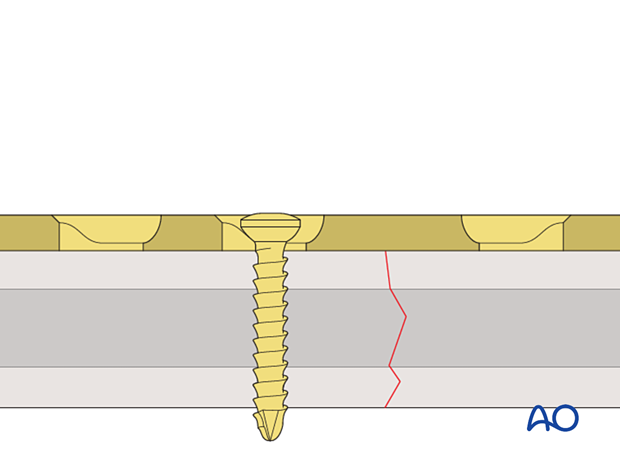
In metaphyseal bone, fully threaded cancellous screws are usually used unless they are acting as lag screws. The screw tip remains within the bone.
